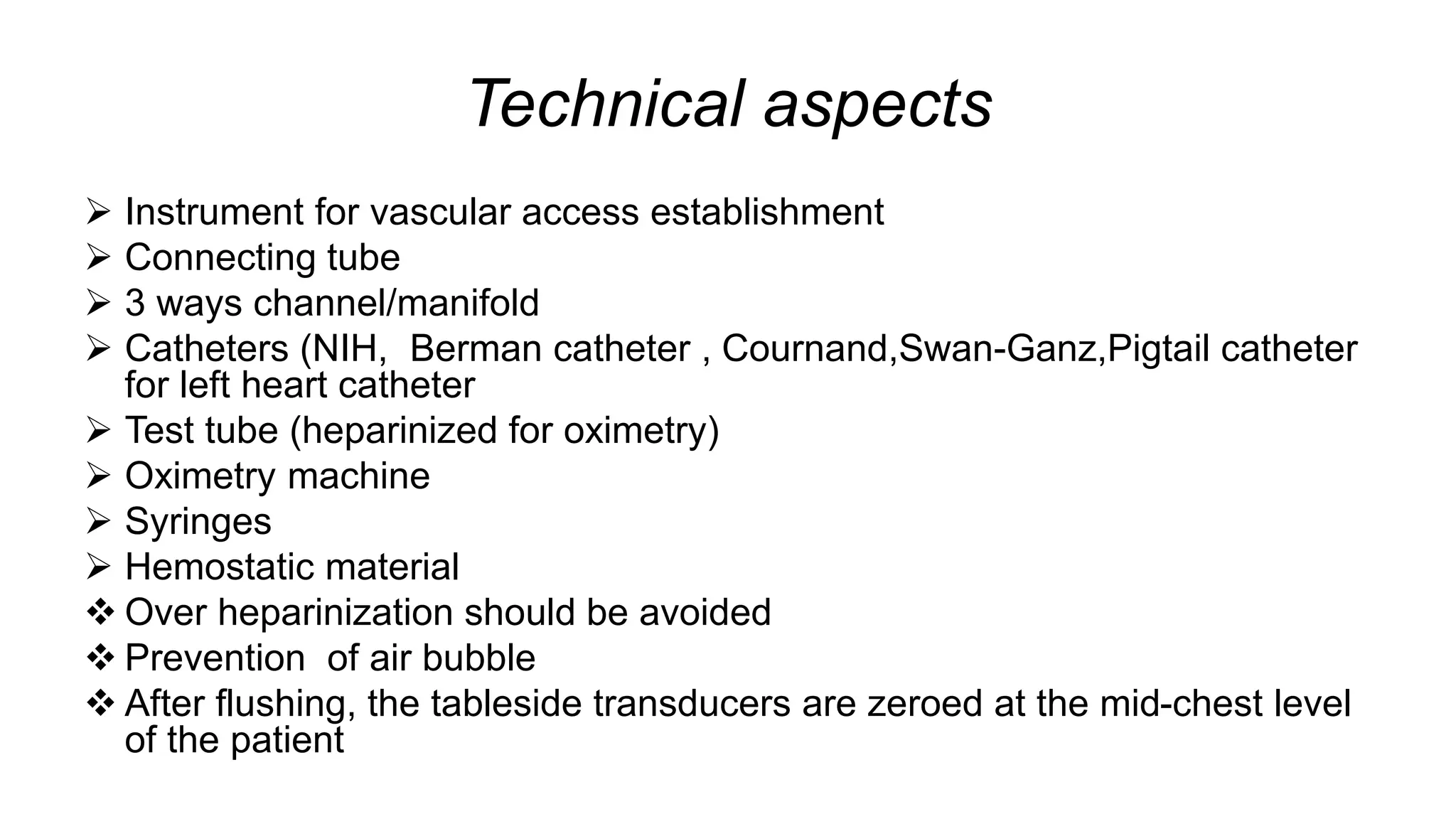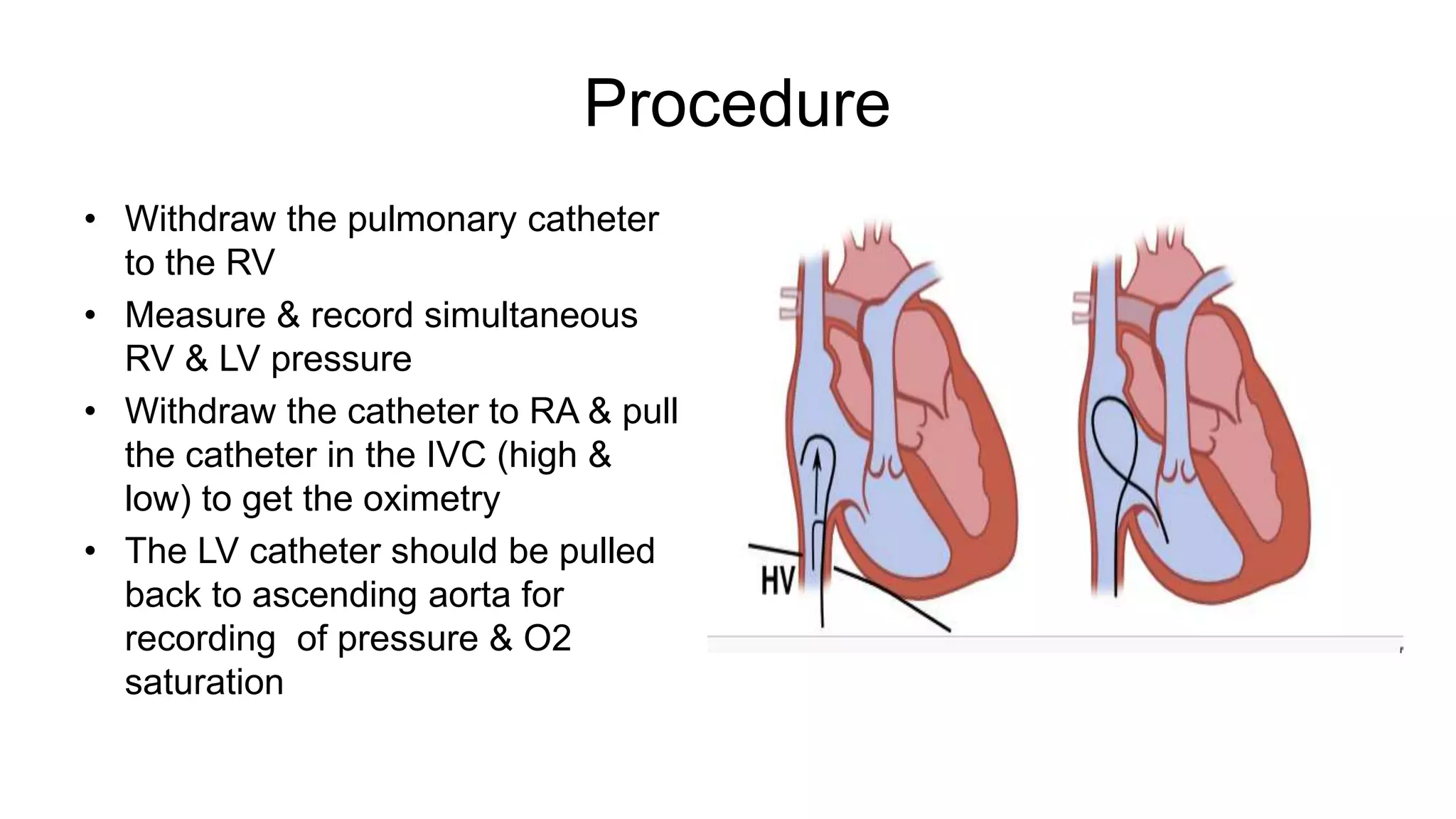Werner Forssman first performed right heart catheterization on himself in 1929. Dr. Swan added a balloon tip to the catheter and Dr. Ganz added a thermistor, which helped develop right heart catheterization as a diagnostic tool. Right heart catheterization is used to measure pressures, cardiac output, oxygen saturation and evaluate conditions like intracardiac shunts and pulmonary hypertension. It provides important hemodynamic information to guide treatment for conditions like heart failure and shock. Complications can include arrhythmias, pulmonary infarction and bleeding.












































